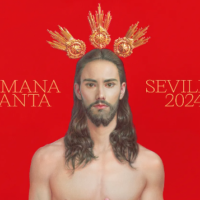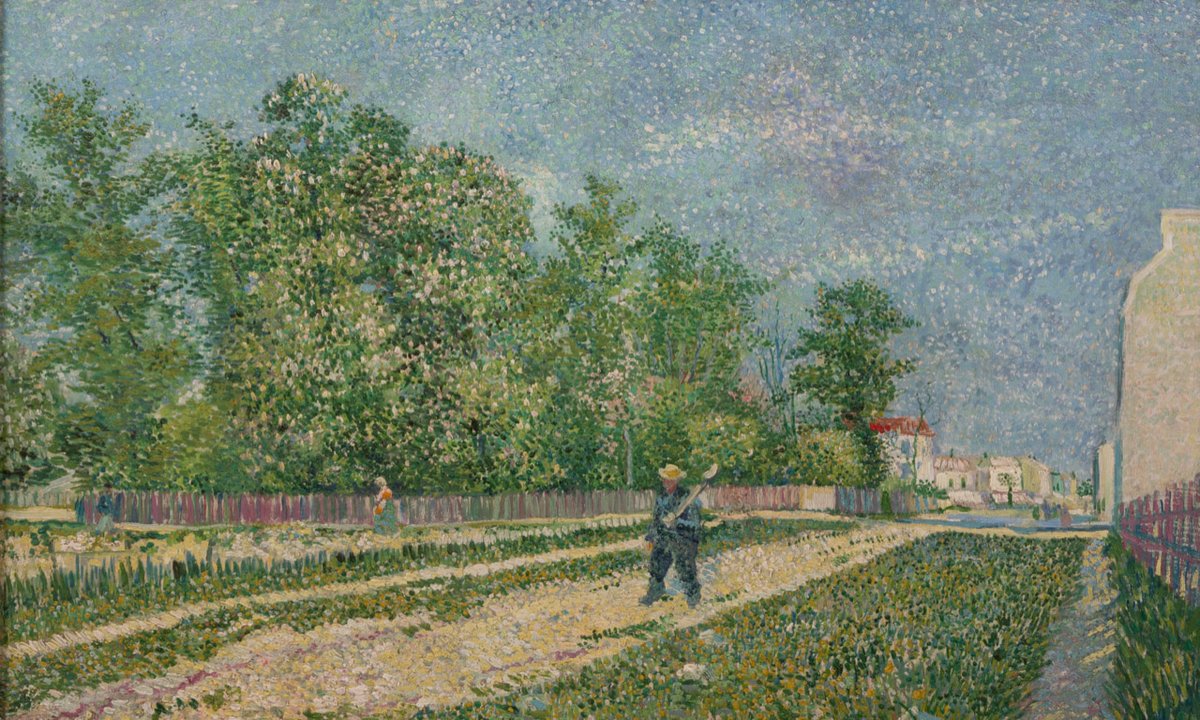EASTER MORNING
2008 - Film & Video (Film & Video)
Bruce Conner
Unlike many of his earlier films which often present poignant critiques of mass media and its deleterious effects on American culture, EASTER MORNING , Conner’s final video work before his death in 2008, constitutes a far more meditative filmic essay in which a limited amount of images turn into compelling, almost hypnotic visual experience. The video presents us with a reinterpretation of footage from his unreleased avant-garde film, Easter Morning Raga , from 1966. In contrast to his more famous pieces like A Movie (1958) and Crossroads (1976) which are juxtapositions of fragments from newsreels, soft-core pornography, and B movies, the images in EASTER MORNING serve as a reinterpretation of footage. Here the artist expands the images in duration, gauge, and frame rate, which results in an enigmatic visual transcendence, or “imagelessness,” and distances the viewers from their preconceptions of what they are watching. Accompanied by rhythmical music, the collision of images in EASTER MORNING is not only testament to Conner’s ability to balance order and chaos, control and chance, but further reveals his abiding interest in alternative ways of seeing and experiencing.
Bruce Conner was undoubtedly one of the key figures of America’s avant-garde art scene since his work emerged in the late 1950s. Affiliated with the beat community, he was overtly opposed to the academic establishment and worked freely in a variety of media, including drawing, sculpture, painting, collage, photography, and assemblage. However, Conner is most recognized for his films in which he created a unique visual montage through the skillful and pioneering editing of found footage.
Colors:
Related works of genres: » funk art, » postmodern artists, » artists from the san francisco bay area, » american contemporary artists, » american experimental filmmakers, » 20th-century american photographers
» see more

© » KADIST
Sergio De La Torre
2008Nuevo Dragon City is a reenactment of a historical event from 1927 in which six Chinese were either trapped or voluntarily hid themselves inside a building in northern Mexico...

© » KADIST
Sergio De La Torre
2011This is not in Spanish looks at the ways in which the Chinese population in Mexico navigates the daily marginalization they encounter there...

© » KADIST
Philip-Lorca diCorcia
For this series, Philip-Lorca diCorcia walked along Santa Monica Boulevard in Los Angeles in search of models who would be prepared to pose in hotel rooms according to pre- planned scenarios...

© » KADIST
Lynn Hershman Leeson
2007Lynn Hershman Leeson’s genre-bending documentary Strange Culture tells the story of how one man’s personal tragedy turns into persecution by a paranoid, conservative, and overzealous government...
Related works featuring themes of: » Abstract Photography, » Anthropomorphism, » Appropriation Art, » Assemblage, » American
» see more

© » KADIST
Wallace Berman
1969While Untitled (Shuffle) presents the same formal characteristics as the rest of Berman’s verifax collages, this constellation of specific images inside the radio’s frames—the Star of David, Hebrew characters, biblical animals—have Jewish symbolism and attest to the artist’s lasting obsession with the kabala...

© » KADIST
Luisa Lambri
2007Custom-built for a silent film star in 1934 in Santa Monica, the Sten-Frenke House is an idiosyncratic icon...
Other related works, blended automatically
» see more

© » KADIST
Bruce Conner
1978In 1977, as an already-established artist best known for his films, Bruce Conner began to photograph punk rock shows at Mabuhay Gardens, a San Francisco club and music venue...

© » KADIST
Wallace Berman
1969While Untitled (Shuffle) presents the same formal characteristics as the rest of Berman’s verifax collages, this constellation of specific images inside the radio’s frames—the Star of David, Hebrew characters, biblical animals—have Jewish symbolism and attest to the artist’s lasting obsession with the kabala...

© » KADIST
Lisa Oppenheim
2003The Damaged series by Lisa Oppenheim takes a series of selected photographs from the Chicago Daily News (1902 – 1933) as its source material...
Related works sharing similar palette
» see more

© » ART AND CAKE
Art of the Joshua Tree – Art and Cake October 30, 2023 October 30, 2023 Author Art of the Joshua Tree Sossi Madzounian Deserts Ikebana , Photography Charity: Center for Biological Diversity Karin Lindeberg Frida, I see you under the shady tree , 35mm Photography 8×10 inches Charity: Center for Biological Diversity Chloe Allred, Dreaming in Cerulean and Quinacridone , Oil Paint on Canvas...

© » KADIST
Eusebio Siosi
2022Jepira is a mythical and essential place of the spiritual dimension for the Wayuu people...
Related works from the » 2000's created around » San Francisco, California
» see more

© » KADIST
Julio Cesar Morales
2006Julio Cesar Morales’s watercolor drawings, Undocumented Intervention , show a variety of surprising hiding places assumed by people trying to cross into the United States without documentation...

© » KADIST
Jedediah Caesar
2009For Untitled, Caesar encased recycled objects such as scraps of plywood, paper or cloth in resin and then cut and reassembled the pieces into abstract forms...

© » KADIST
Raymond Pettibon
2005The five works included in the Kadist Collection are representative of Pettibon’s complex drawings which are much more narrative than comics or cartoon...
Other works by: » Bruce Conner
» see more

© » KADIST
Bruce Conner
1978In 1977, as an already-established artist best known for his films, Bruce Conner began to photograph punk rock shows at Mabuhay Gardens, a San Francisco club and music venue...

© » KADIST
Bruce Conner
1995Bruce Conner is best known for his experimental films, but throughout his career he also worked with pen, ink, and paper to create drawings ranging from psychedelic patterns to repetitious inkblot compositions...
Related artist(s) to: Bruce Conner » Andy Warhol, » Bruce Nauman, » Felix Gonzalez-Torres, » Jean Tinguely, » Steve McQueen, » Douglas Gordon, » Harun Farocki, » Jack Goldstein, » John Baldessari, » Richard Serra
» see more

© » KADIST
Félix González-Torres
1992Behind the simplicity and beauty of this untitled photograph of a brilliantly-colored flowerbed by Félix González-Torres are two remarkable stories of love, loss, and resilience...

© » KADIST
Harun Farocki
2009For Immersion , Harun Farocki went to visit a research centre near Seattle specialized in the development of virtual realities and computer simulations...

© » KADIST
Douglas Gordon
2002Blind Spencer is part of the series “Blind Stars” including hundreds of works in which the artist cut out the eyes of Hollywood stars, in a symbolically violent manner...

© » KADIST
Douglas Gordon
2004Douglas Gordon’s single-channel video The Left Hand Can’t See That The Right Hand is Blind, captures an unfolding scene between two hands in leather gloves—at first seemingly comfortable to be entwined, and later, engaged in a struggle...
Related works found in the same semantic group
» see more

© » KADIST
Olaf Breuning
2002In the work We only move wehen something changes !!!, Olaf Breuning composes a portrait of posed antiglobalization protesters, each wearing clown noses, inside of a scene reminiscent of an event...








